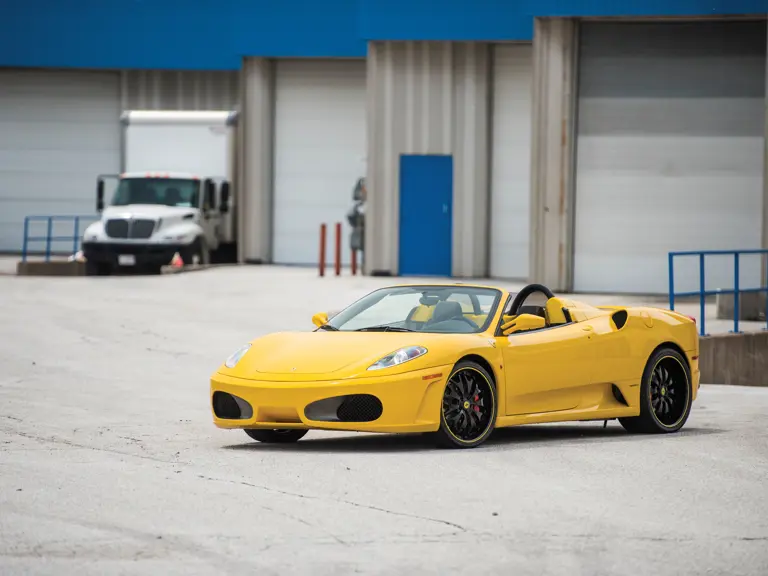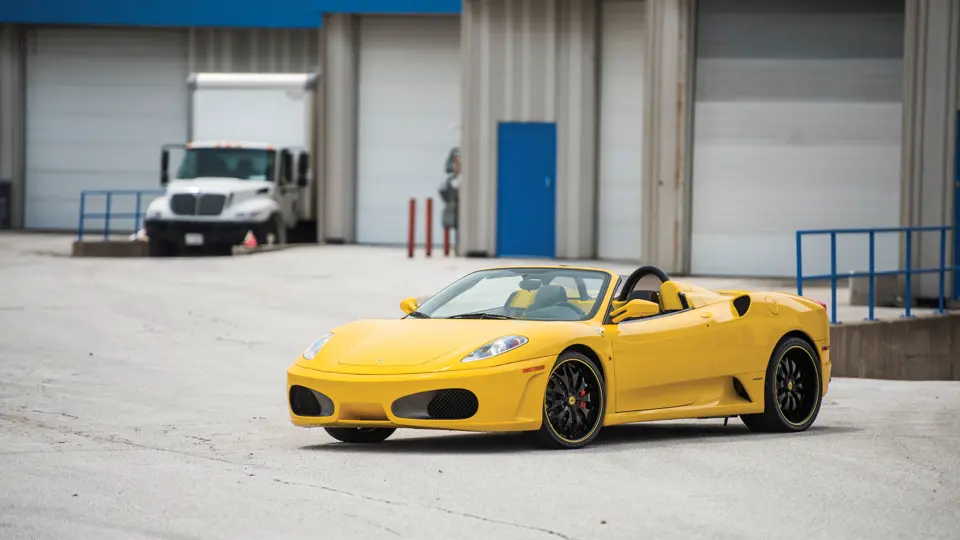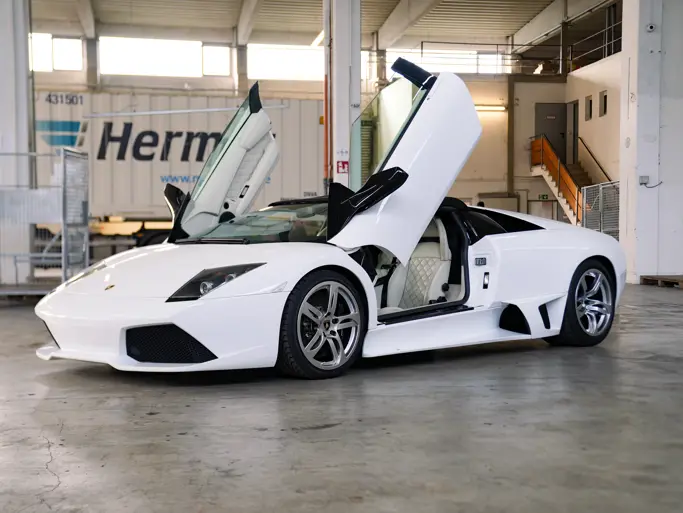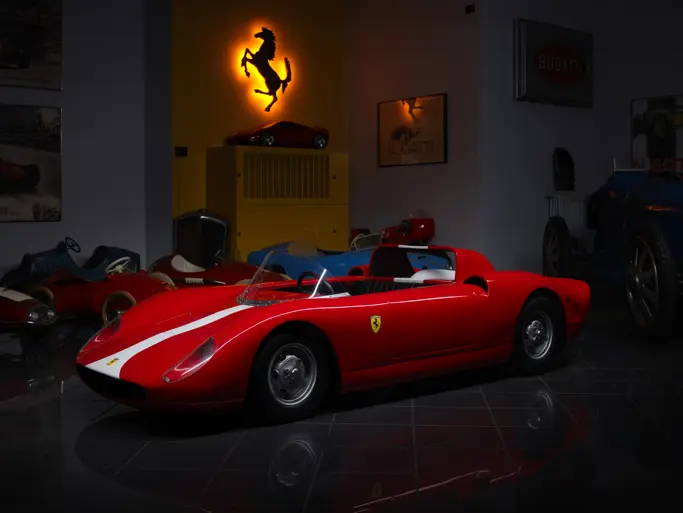The F430 Coupe had been released in 2005 and was clearly a logical development from the 360M. External changes implemented by Pininfarina included larger air intakes to the front and sides, a redesigned tail and rear diffuser, and new swept headlights. These changes were subtle in form and were executed by utilizing state-of-the-art computer aerodynamic simulation programs used by the Ferrari Formula 1 team. These evolutions helped to make the F430 more fuel efficient and stable, while also reducing drag and lift.
It was, however, the engine that was all new. The compact, lightweight engine that could displace 4,308 cubic centimeters and develop 483 brake horsepower propelled the car to over 193-mph, with a 0– to 62-mph time of 4.1 seconds. Of course, the F430 Spider incorporated all the important new technical features of the new Ferrari. The electronic differential (E-Diff) was first developed by the Grand Prix team, and the now familiar steering wheel-mounted rotary switch, the “manettino,” as the F1 drivers called it, allowed the car’s set up to be changed easily and quickly.
The spider only weighed approximately 150 pounds more than the coupe (aka Berlinetta). The superb design of the electric roof allowed the engine to remain visible under its glass cover at the rear of the cockpit. Indeed, the engine can be seen in all its magnificence at all times. Remarkably, the performance of the spider matched that of the coupe, and the difference in torsional rigidity was negligible.
This head-turning Ferrari “convertible” is finished in Fly Yellow with black leather and yellow stitching on the sport seats. The interior has many desirable carbon fiber appointments, including the steering wheel, the F1 shifter paddles, the instrument surround, the air conditioning surrounds, the stereo and climate control surrounds, plus the full center console. This F430 is also fitted with Daytona-style seats, a fire extinguisher and optional upgraded radio, including navigation and additional speakers. The top automatically folds down into a compartment above the mid-mounted engine. The exterior sports red brake calipers, cast-iron alloy vented rotors (developed in collaboration with Brembo), Scuderia Ferrari shields on the front fenders and 20-inch black-painted Cargill rims with a yellow pinstripe around the outside perimeter. With a body designed by Pininfarina, the F430 Spider is a pure statement of speed with style.
With frontal design features inspired by the legendary Ferrari 156 Grand Prix car that the late Phil Hill drove to the 1961 Formula One World Championship, this is an evocative, technologically cutting-edge sports car of the highest possible order. The response and accolades for Ferrari’s F430 were plentiful, and this model is regarded by many to be the most user-friendly Ferrari ever produced. It has stunning looks and is considered to be the most exotic of the choices available in this class of car.



 | Santa Monica, California
| Santa Monica, California


